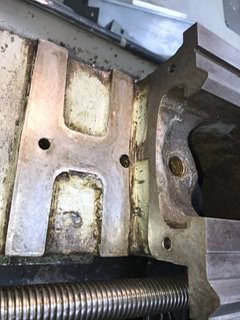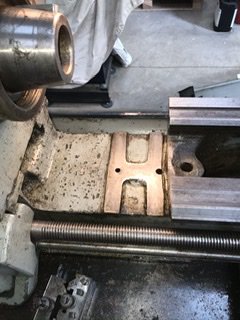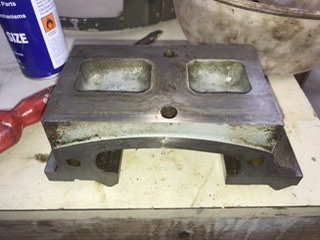I have a Colchester student MK2, the square head version. I've tweaked the compound slide and got it down to a backlash of circa 20microns, or just under 1 thou. which I’m delighted with. I’m now trying to tune in the cross slide. The nut and shaft have very very little wear and I’ve eliminated virtually all of the backlash and still able to smoothly move it from one side to the other. What I’m coming up with though, is there is end play, in other words the screw is moving along it’s axis. I have the manual and apart from tightening up the nut within the handle, there doesn’t appear to be any way of removing the end play? tightening the handle just increases friction and there is no thrust bearing. I have looked at other Colchester lathe manuals and I can see that for instance the Triumph has on the screw at the opposite end to the handle an arrangement where a nut and a thrust washer allow end play to be eliminated. Is there a way of getting rid of end play on the Student?
I have also noticed when I have been levelling the lathe that the gap insert in the bed isn’t absolutely flush with the rest of the bed. I need to take it out and reset it. I have read that this is difficult to get right. Any advice on the best way to get it properly aligned would be appreciated.
Finally I have a 3 jaw L0 taper Bernard chuck that I’d like to take apart to clean up and re-oil. I’ve removed the jaws and the three bolts but can’t see any easy way of getting the chuck to come apart. Is there a technique to open these up......or should I leave well alone?
I have also noticed when I have been levelling the lathe that the gap insert in the bed isn’t absolutely flush with the rest of the bed. I need to take it out and reset it. I have read that this is difficult to get right. Any advice on the best way to get it properly aligned would be appreciated.
Finally I have a 3 jaw L0 taper Bernard chuck that I’d like to take apart to clean up and re-oil. I’ve removed the jaws and the three bolts but can’t see any easy way of getting the chuck to come apart. Is there a technique to open these up......or should I leave well alone?




